Pioneer of Italian Fashion: Artist-Designer Rosa Genoni
An Italian artist-designer at the turn of the 20th century, Rosa Genoni is described as a founder of Italian fashion, a dressmaker, a teacher, a...
Nikolina Konjevod 13 May 2024
When looking at historical jewelry one can ask themselves a series of questions centered on the object’s significance. Who was it made for and what was its function? Oftentimes, the design alone can tell us. Jewelry in Ancient Greece falls under both of these categories and more. It is beautiful. It is meaningful. And can help art historians on their journey to discover even more about a civilization that has captured curiosities for ages.
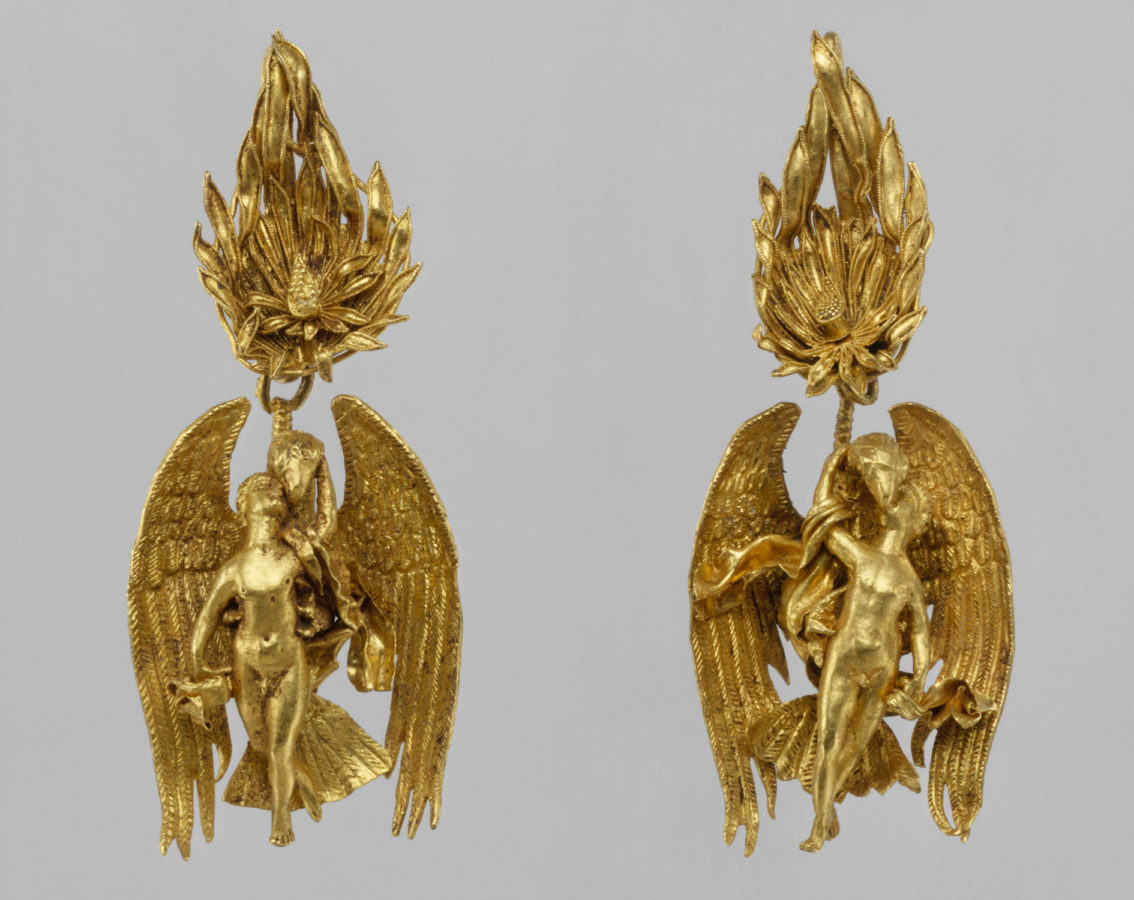
Much of the jewelry in Ancient Greece, the Hellenistic Period specifically (c. 323 BCE–31 BCE), was made of gold. Gold was used before but became especially popular after Alexander the Great’s conquest of the Persian Empire which resulted in more intense trade in this stock in the Hellenistic world.
Many different types of jewelry existed during this time: hair ornaments, thigh- and armbands, earrings, rings, pins and pendants, and necklaces. Besides gold, gemstones, semi-precious stones, and pearls often decorated the ornamental pieces. The necklace below presents the use of gold, gemstones, pearls, and a butterfly design. The different shapes of the gemstones set in gold make this piece really stand out.
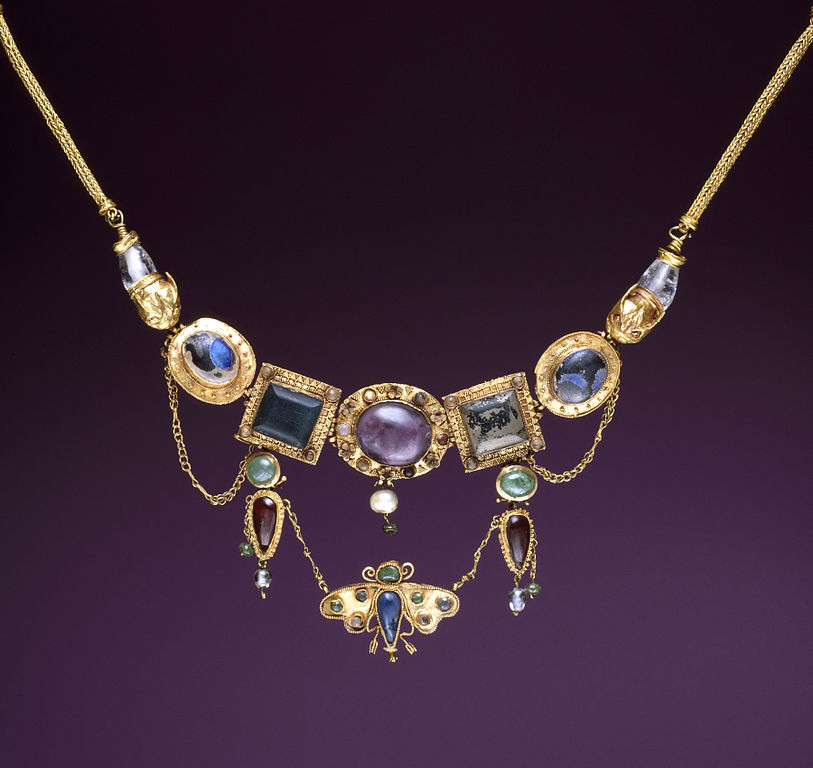
Many of the motifs involved Greek gods, or plants and animals, such as the set shown below. The elaborate design of the collection includes Dionysus (the god of wine) and his wife, Ariadne. The motif on the earrings is of a muse playing lyre sitting above the crescent shape of the set.
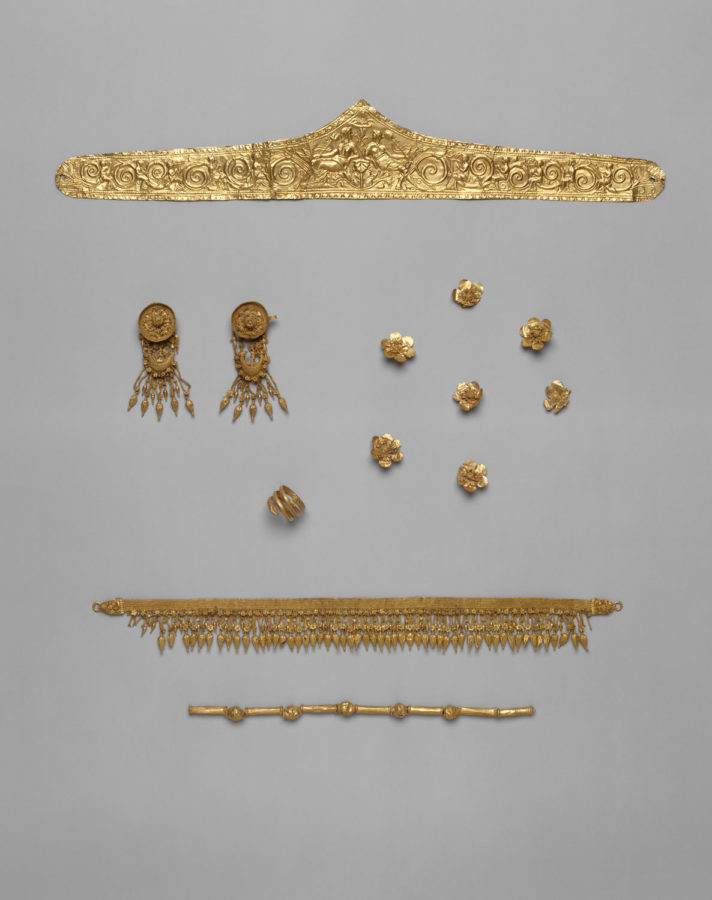
Animal motifs were as common as those of the gods. Below, two sets of golden rams adorn these bracelets; the heads of the rams extend out of ornately designed collars while the base is made of polished rock crystal shaped to appear as if it was twisting.
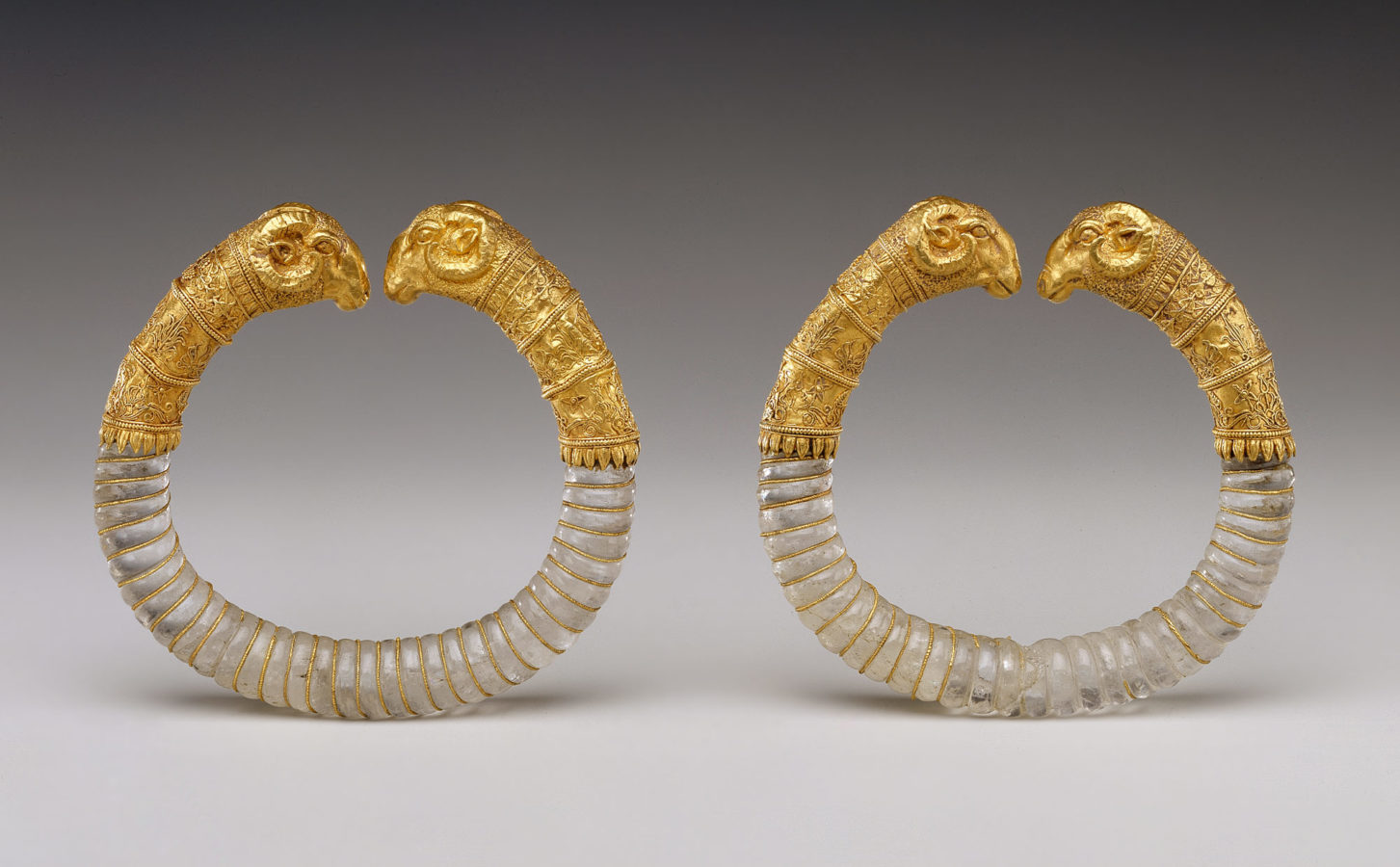
Like the Rams heads above, this necklace located at the Walters Art Museum in Baltimore, Maryland, utilizes bullheads in its design. The necklace also uses a garnet gemstone, tying together much of what makes Hellenistic period pieces identifiable and what has been discussed in this article, thus far from Persian influences to Ancient Greek motifs.
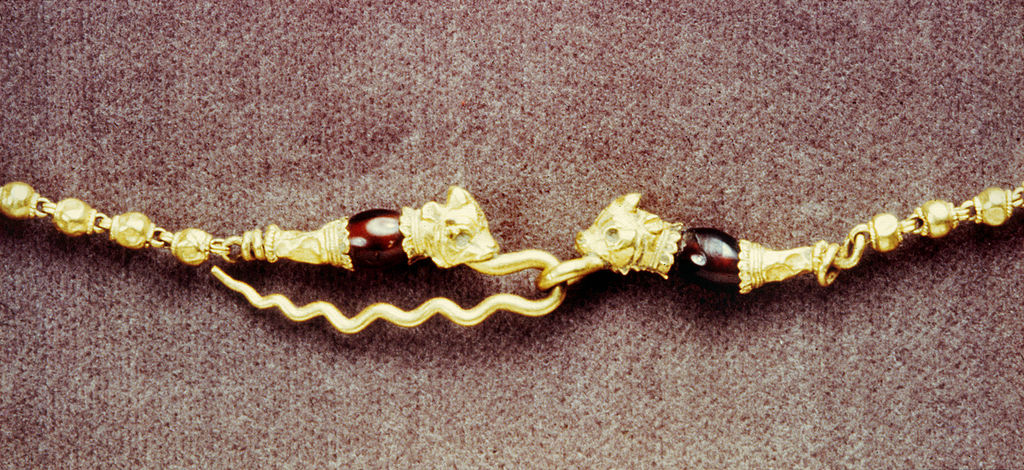
Jewelry had been worn both during a lifetime and after passing away; pieces were therefore created for everyday life and in order to be worn for burial. Much of the best-preserved pieces of jewelry come from tombs as the deceased were buried with their personal items.
The necklace with a butterfly pendant was found on a deceased person. Because Ancient Greeks believed the butterfly to represent their psyche or soul, it was often used in burial to represent the leaving of one’s soul from their physical body.
However, pieces were often created with multiple purposes in mind; death being just one of them. But what about life? And marriage?
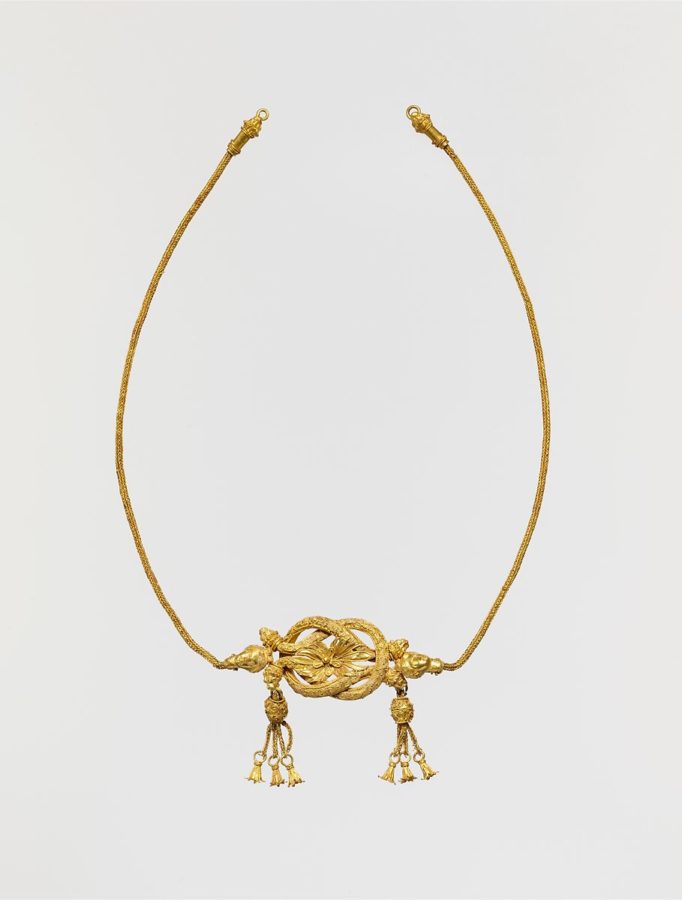
In Ancient Greece, the Herakles Knot is a symbol of marriage, otherwise known as a marriage knot, and was a representation of the virginity of the bride, as the groom would have untied the knot worn by the bride.
DailyArt Magazine needs your support. Every contribution, however big or small, is very valuable for our future. Thanks to it, we will be able to sustain and grow the Magazine. Thank you for your help!